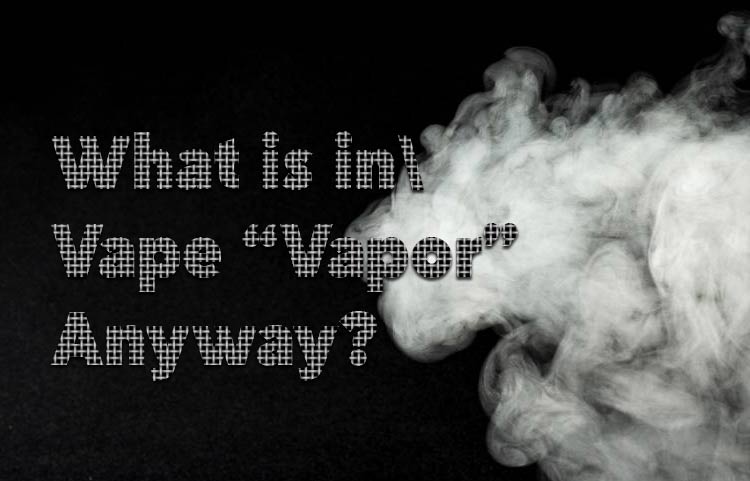Table of Contents [show]
Vaping is something we’ve all heard about, seen, or done. It is becoming incredibly popular as new vaporizers and vaping equipment comes out almost daily. This, along with its seamless ease of use, has given rise to a culture of vaping that is propelled ever-forward as new products evolve and enhance the vaping experience. This pervasive and convenient aspect of vaping can sometimes distance us from the basic and fundamental facts about vaping, like how exactly it works, and what goes into the vapor we have grown to covet so much.
But with a bit of basic knowledge, we can, as consumers, take back this consciousness. And, as such, we can give ourselves the power to be informed about the vapes we love, and indeed why we love them.

What is Vaping and How Does it Work?
Vaping refers to the act of inhaling the vapor produced by a vaporizer or electronic cigarette. It has been viewed as, among other things, an alternative to smoking since many vape liquids (e-juices) can contain nicotine, THC, and CBD, while eliminating the necessity of using traditional combustion-heating smoking methods.
But how does vaping actually work, and how is vapor produced? Whether a dry herb vaporizer, concentrate vaporizer, or an e-liquid vaporizer, all vaporizers fundamentally work based on the same principle – producing vapor instead of combusting material to produce smoke. While e-liquid vapes use a wick and heated coil to heat e-liquids to the point it turns into vapor, dry herb and concentrate vapes rely on convection and/or conduction heating methods to either directly or indirectly heat the vaping material to the point of producing vapor.
What’s in Vape Smoke?
This question in itself is a bit of a misnomer, since when we vape the substance that is produced is actually vapor, as we’ve discussed above. If we start with dry herb vapes, then, it might seem contrary to say that a dry substance can produce a vapor, but this is indeed the case. Dry herbs are heated by one of the two heating methods mentioned above, or a mixture of the two, to a temperature just below the substances boiling or combustion point without directly burning it.
The vapor produced in a dry herb vape contains all of the things you want in your dry herb, like THC, CBD, or other cannabinoids, but deliver it in the form of vapour rather than smoke. The compounds in your initial product will not be lost or prove ineffective during the vaping process, which of course is exactly why vaping is such an attractive idea.
E-liquid vapor, then, consists of e-liquid turned into the form of vapor. E-liquids usually consist of just a few ingredients to carry flavors and nicotine.
These flavors make vaping pleasant and fun, but what goes into making these delicious flavours? In addition to the flavors themselves, e-liquids are also made by mixing the flavorings into propylene glycol and vegetable glycerin by using a solvent. These are transferred into the vape liquid, vaporized, and then inhaled as vapor.
Of course, it’s important to consider that these risks have mainly been theorized, and there are currently many ongoing studies aiming towards finding concrete evidence of these problems and their causes.
Can Vaping Produce Smoke?
Under normal circumstances a vape will not produce smoke. But if we take apart this sentence, what are ‘normal’ circumstances? Well, if you are using a quality vape, dry herb or concentrate or otherwise, and if you are practicing appropriate vaping practices (not over-filling your oven and properly cleaning your device, for example) then you should never have a close encounter of the ‘smoke’ kind.
However, the risk of your vaporizer producing smoke can increase under certain circumstances, and indicates a potential issue with your device or vaping practices, and is not indicative of the act of vaping overall. There can be a few causes for vapes producing smoke:
- An over-packed oven can create a situation in which your product gets heated to a high enough temperature to cause combustion
- Trying to vape with a low amount of e-liquid in your tank can cause the remaining liquid to burn rather than turn to vapor
- Debris near an important part of the heating element, usually caused by not cleaning the oven sufficiently, can cause the debris to combust and produce smoke
How To Prevent Smoke in your Vape
Of course, no one wants to encounter smoke in their vapor, it’s just simply counter-intuitive. But there are a few good practices to get in the habit of doing, no matter what kind of vape you have, that can help prevent this from happening. Maybe the best initial advice to follow is to start with a good quality vape in the first place. A reliable and trusted brand, like Storz and Bickel, for example, take the quality of their products seriously, in this case to the point of making them medical-grade. A brand that puts this much effort into the quality of their products will contain sophisticated heating mechanisms with acute temperature range control.
Moreover, the right accessories could make all the difference. If you’re concerned that you might over-pack your oven and cause your product to come too close to the heating element, maybe dosing capsules are right for you. And, surely, a wear and tear kit is an excellent way to ensure that you have the tools to keep your vape clean and in perfect working order. It’s also important to remember that vapes age, and replacing key components, like your cooling unit, will ensure that your device doesn’t overheat. Treating your unit with the respect and love it deserves, and doing everything to keep it running the way it should is the best way to avoid smoke production. So remember to take care of your vape so it can continue to do that which it was meant to do!




